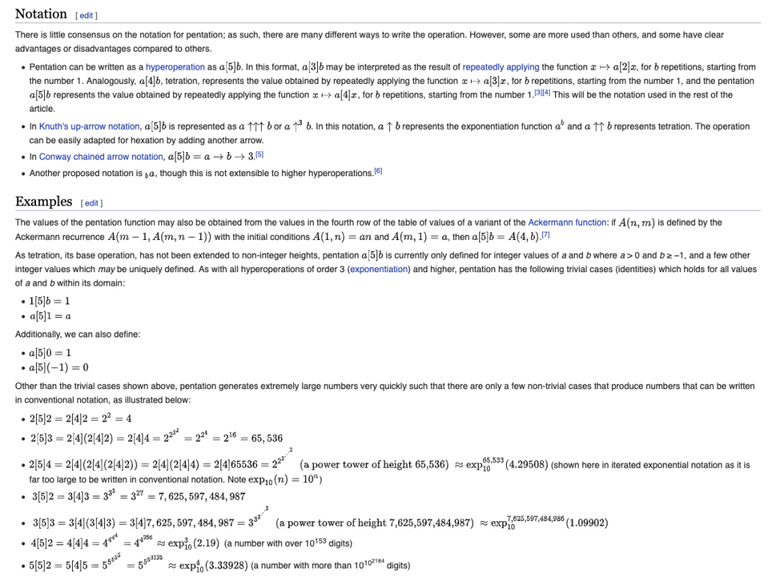[latexpage]
A moment ago I found myself trying to explain why "Graham's number" was more exciting to learn about than what it sounds like, i.e. it's "just" a really big number. No no. This number expands your notion of what "big" actually means, because you need to learn about the operation that succeeds exponentiation in order to understand it: "tetration". This Numberphile does a great job at explaining it.
As I was trying to explain the excitement of this number it occurred to me that I better understood how Douglas Hofstadter would remember his childhood feeling of disappointment in learning that a subscript like $n$ in $x_n$, does not refer to something as interesting as exponentiation, like $x^n$.
So what is the hyperoperation ($x[5]r$) beyond tetration ($x[4]r$)? It is called "pentation":
https://en.wikipedia.org/wiki/Pentation
Posted from my blog with SteemPress : https://wootcrisp.com/2019/07/21/grahams-number-and-analogies-as-the-core-of-cognition/

Congratulations @wootcrisp! You received a personal award!
You can view your badges on your Steem Board and compare to others on the Steem Ranking
Vote for @Steemitboard as a witness to get one more award and increased upvotes!